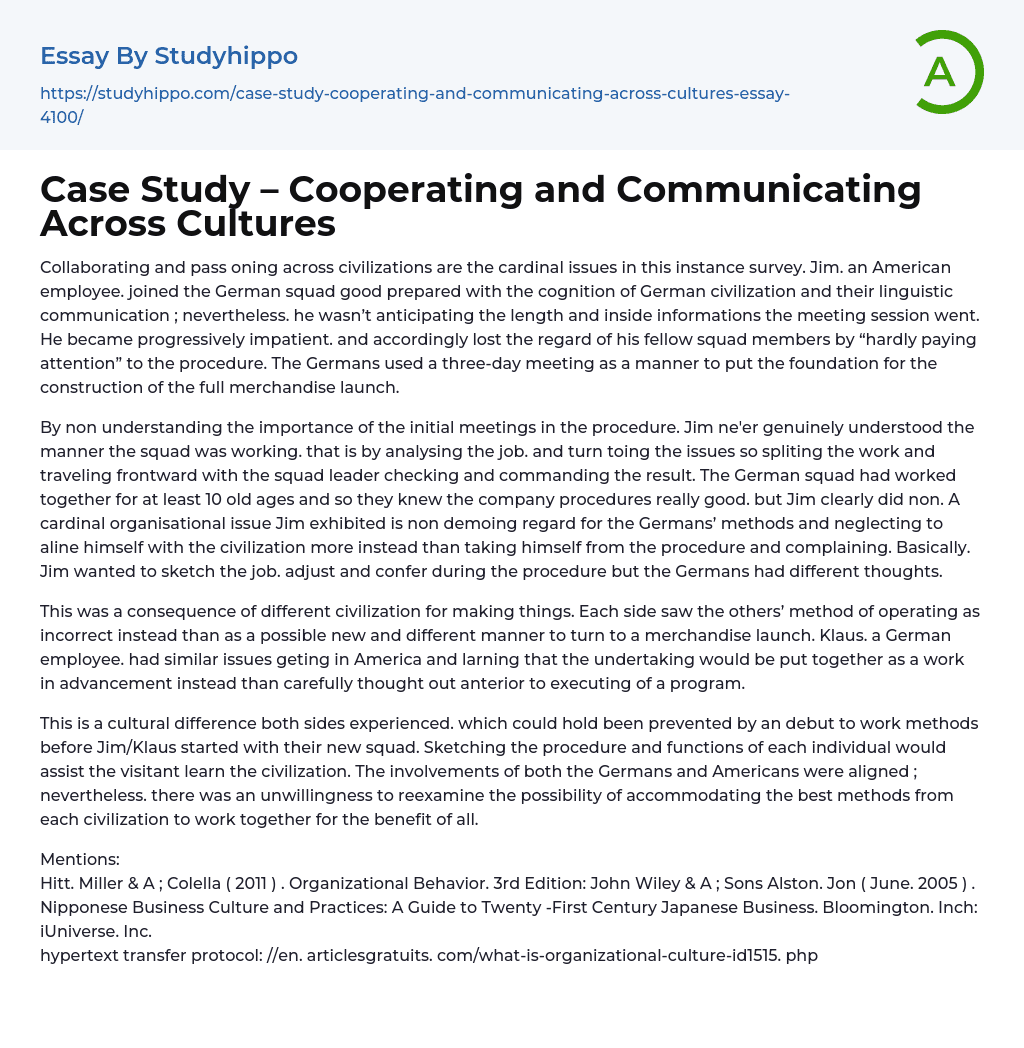

Case Study – Cooperating and Communicating Across Cultures Essay Example
The main focus of this case study is on collaborating and communicating across cultures. Jim, an American employee, was well-prepared with knowledge of German culture and language when he joined the German team. However, he underestimated the length and level of detail of the meeting session. As a result, he became increasingly impatient and lost the respect of his fellow team members by not paying enough attention to the process. The Germans used a three-day meeting as a way to establish the foundation for the entire product launch. By not recognizing the significance of these initial meetings, Jim never truly understood how the team operated. The team's approach involved analyzing the problem, addressing the issues, dividing the work, and moving forward with the team leader overseeing and controlling the outcome. The German team had worked together for a minimum of
...10 years and were familiar with the company procedures, unlike Jim. A major organizational issue demonstrated by Jim was his lack of respect for the Germans' methods and failure to align himself with their culture. Instead, he removed himself from the process and complained. Essentially, Jim wanted to outline the problem, make adjustments, and confer throughout the process, but the Germans had different ideas due to their different cultural approach to doing things.Both sides viewed each other's methods of operation as incorrect instead of considering them as possible new and different approaches to a product launch. Klaus, a German employee, faced similar issues when working in America and discovering that the project would be assembled as a work in progress instead of being carefully planned before implementation. This cultural difference could have been prevented if
there had been an introduction to work methods prior to Jim/Klaus joining their new team. Outlining the process and roles of each person would help the visitor understand the culture. Although the interests of both Germans and Americans were aligned, there was unwillingness to review the possibility of adopting the best practices from each culture to collaborate for the benefit of all.
References:
Hitt, Miller & Colella (2011). Organizational Behavior (3rd Edition): John Wiley & Sons.
Alston, Jon (June, 2005). Japanese Business Culture and Practices: A Guide to Twenty-First Century Japanese Business. Bloomington, IN: iUniverse Inc.
Source: http://en.articlesgratuits.com/what-is-organizational-culture-id1515.php
- Interpretation essays
- Plagiarism essays
- Analogy essays
- Learning English essays
- Coaching essays
- Critical Thinking essays
- homework essays
- Learning essays
- Library essays
- Listening essays
- Literacy essays
- Mentor essays
- Physical Education essays
- Project essays
- Reading essays
- Research essays
- Sex Education essays
- Social Studies essays
- Standardized Testing essays
- Study Plan essays
- Teaching essays
- Collective Bargaining essays
- Corporate Culture essays
- Hard Work essays
- Job Satisfaction essays
- Organizational Culture essays
- Organizational Structure essays
- Sweatshops essays
- Workforce essays
- Working capital essays
- Working Class essays
- Working Time essays
- Workstation essays
- Academia essays
- Academic And Career Goals essays
- Academic Integrity essays
- Brainstorming essays
- Brown V Board of Education essays
- Brown Vs Board Of Education essays
- Coursework essays
- Curriculum essays
- Distance learning essays
- Early Childhood Education essays
- Education System essays
- Educational Goals essays
- First Day of School essays
- Higher Education essays
- Importance Of College Education essays
- Importance of Education essays
- Language Learning essays



